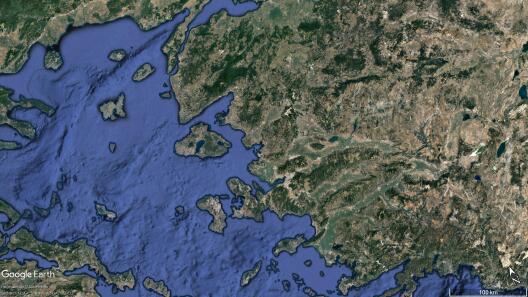Antonis Kourkoulakos
Curriculum Vitae
N. N.
Dissertationsprojekt

© Antonis Kourkoulakos Getting rid of the Interface: East Aegean/western Anatolia and the Role of Aššuwa and Arzawa in Late Bronze Age Cultural Interaction
My doctoral research examines the cultural interaction among the Mycenaeans, the Hittites and the kingdoms of Seha River Land and Arzawa in eastern Aegean/western Anatolia and the north-east Aegean islands during the LBA, through the archaeological and textual sources.The Late Bronze Age (1600-1200 BCE) in eastern Mediterranean is an intense international period where commerce, diplomacy and military confrontations flourished. This international scene was characterized by big empires (the Hittites, the Egyptians etc.) which controlled various areas by taking them into vassalhood. In this context western Anatolia and the islands of the north-east Aegean are often considered by scholars as a peripheral zone, a region in-between, a space of conflict between two major powers of that time, the Hittite empire at the east and the Mycenaeans (Aḫḫiyawa) at the west. However, it seems that the western Anatolian kingdoms, especially the kingdoms of Arzawa and Šeḫa River Land, should not be considered as re-actors in the interplay of LBA powers but rather as equally important powers, at least for a time, with the Hittites and the Mycenaeans.
It poses a great research challenge to track, identify and explain the political status and role of Western Anatolia during the LBA. For many years, this region was perceived as a peripheral world, a sandwiched area between the “super-powers” of the Hittites at the east and the Mycenaeans at the west. However, it seems that this is not the case since it appears that this large geographically diverse zone could have enjoyed some form of independent and unified cultural and political status. Nowadays, more and more researchers are trying to point out the importance that this region had in the political and cultural interplay of eastern Mediterranean. It is necessary thus, to examine this area not as a region in-between two major powers but there is an increasing need to firstly investigate the local kingdoms, politically and culturally, on their own right and then to examine their relations with the Mycenaeans and the Hittites. Having said that, the aim of this dissertation is exactly that, namely, to point out the political and cultural importance of western Anatolia, by examining the two most prominent kingdoms of western Anatolia, the kingdom of Šeḫa River Land and the kingdom of Arzawa.
The overall aim of this thesis is to gain a regional and bottom-up understanding of Šeḫa River Land’s and Arzawa’s cultural, political and power status and their association with the Hittites and the Mycenaeans. This will be achieved by examining the mode of cultural interaction, using a holistic approach, among the powers of the Šeḫa River Land, Arzawa, the Hittites and the Mycenaeans. A critical analysis of the excavation reports of western Anatolian and insular north-east Aegean settlements that produced substantial Late Bronze Age archaeological material such as pottery, architecture, seals, rock monuments, metal objects (weaponry, jewelry) and burials will help me identify the possible cultural affinities and influences in the region. Furthermore, these archaeological data will be combined with the Hittite, Akkadian and Greek (Linear B) written sources which describe the political and historical context in western Anatolia.


